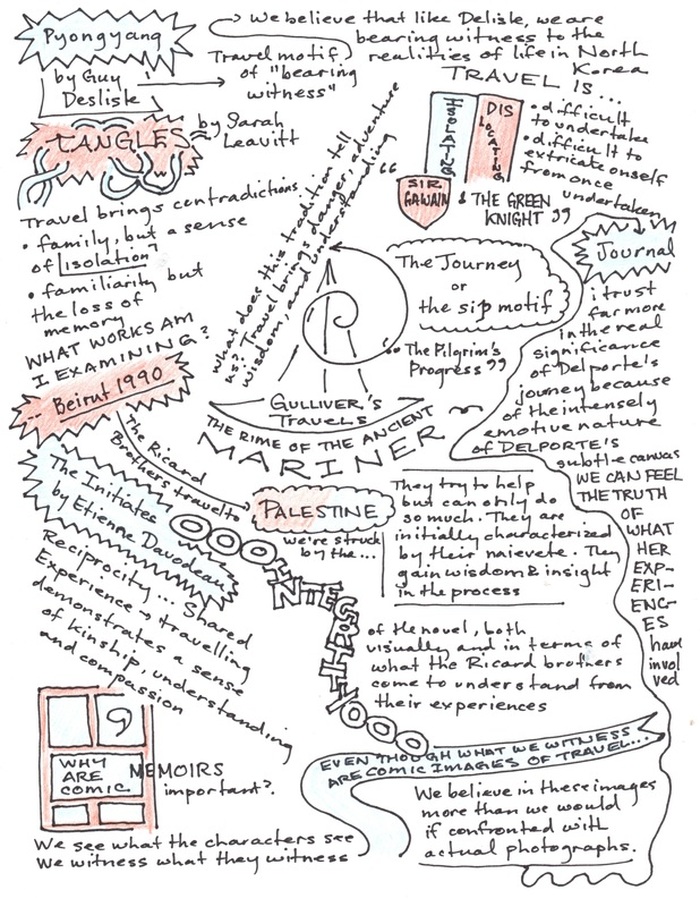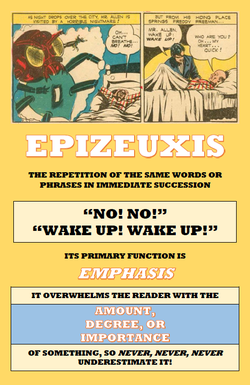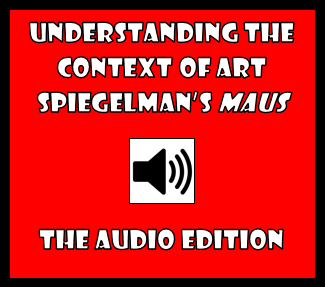CITE 2014 -- Some Reflections on Graphic Memoirs, Travel Literature, and Visual Brainstorming
4/12/2014
by Glen Downey, Comics in Education, www.comicsineducation.com Some Takeaways from "I Witness: How Graphic Storytellers Are Teaching Us About the World and How We See It" If you're planning to teach a major work of travel literature in your high school English course or perhaps even an entire unit with travel as a focus, you might consider the possibility of going graphic. As we explored in "I Witness," a workshop at 2014 CITE Conference, graphic travelogues and graphic memoirs with a significant travel focus can provide a perspective on "the journey" that is unique to the genre of visual narrative. Because these writers and artists must show the visual context of the story they are telling, and because the context -- to be believed -- must actually look authentic, there often seems to be a tendency on the part of the graphic travel writer to let the place they are visiting (or indeed "bearing witness to") tell its own story. I feel like this whenever I read Guy Delisle's Pyongyang or the Ricard Brothers' Beirut 1990 or Florent Chavouet's Tokyo on Foot. While it is true that I learn about these writers' experiences through their work, I learn so much more about the place they are visiting as though the place itself were speaking to me. The visual brainstorming above provides a small snapshot of the ideas that come to mind when we begin to think both about travel lit and the graphic memoir. We can see that there are tremendous possibilities for making connections between the travel literature of old and those found in today's graphic travelogues. In your next travel literature unit, why NOT feature excerpts from The Wanderer, The Seafarer, Gulliver's Travels, A Pilgrim's Progress, The Rime of the Ancient Mariner, Into the Wild, Palestine, Pyongyang, Tokyo on Foot, and Safe Area Goradze? You can throw in A Walk in the Woods, The Fixer, Beirut 1990, and Into Thin Air for good measure. What I'm advocating is not to use graphic travel literature merely as a way to supplement your teaching of a traditional travel novel, but to include it as an equal partner in the discussion of how we write about travel. For those who didn't get a chance to attend the workshop, here's the handout!
0 Comments
Your comment will be posted after it is approved.
Leave a Reply. |
Glen DowneyDr. Glen Downey is an award-winning children's author, educator, and academic from Oakville, Ontario. He works as a children's writer for Rubicon Publishing, a reviewer for PW Comics World, an editor for the Sequart Organization, and serves as the Chair of English and Drama at The York School in Toronto. If you've found this site useful and would like to donate to Comics in Education, we'd really appreciate the support!
Archives
February 2019
|




 RSS Feed
RSS Feed
